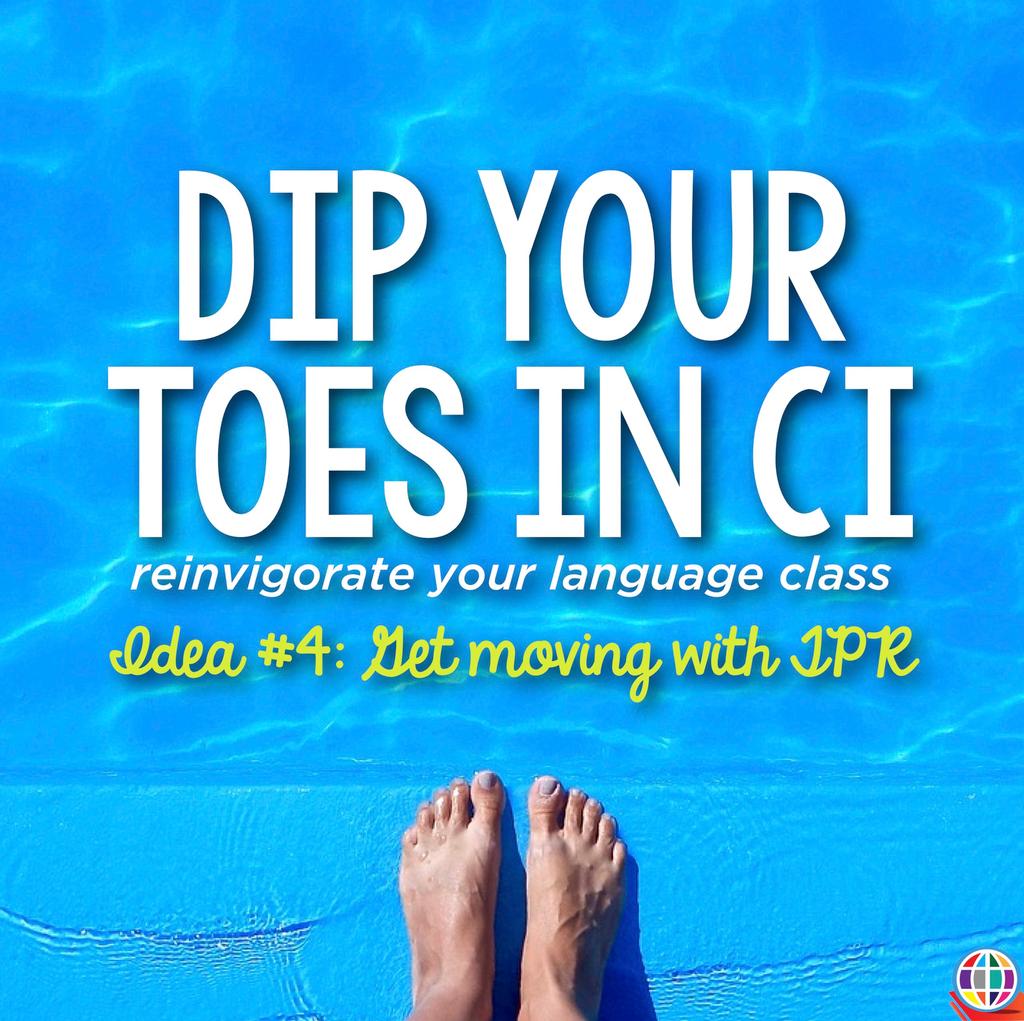It’s a new school year and you, dear language teacher, are ready for a new YOU! You have heard about comprehensible input centered instruction, you perhaps attended a workshop or six over the summer…maybe you have even given CI instruction a go in the past! Whatever your background looks like, you have decided that 2017 is the year 🙂 Yahoo!
I was at our family friend’s camp a few weeks ago, and it is on a beautiful lake in Upstate New York. They have a deck down on the water. On the left-hand side of the deck, a wooden dock juts out into the lake. At the end of the dock, the water is at least 6′ deep. On the right-hand side of the deck, a set of stairs descend into the depths, and the water at the bottom of the stairs is no more than a foot or two deep, depending on the rainfall that year. I LOVE swimming in lakes. There is nothing that makes me feel like a kid again like sloppily swimming around in the open water, jumping off floating docks and trampolines, and feeling the reeds sneak up my legs as I shoot down toward the lake bottom, racing one of my siblings to see who can touch it and re-surface first! But at the beginning of lake season–or on a breezy summer day–I stand on that deck forever trying to decide how I am going to enter the lake for the first time. Will I run full-speed down the dock and jump off the end, instantly frozen as I bomb into the cold water? Or will I torture myself and test my mental stamina as I walk down the steps and then wade out into the lake, freezing just an inch or two of my body at a time?
Maybe you are standing on that deck right now, looking at the coming school year and wondering how to enter it. If you’re leaning toward going all-in, right away, there are a lot of awesome resources out there to help you. If you need a curriculum to help you learn to swim in this new lake, there are lots of them out there to choose from (Fluency Matters’ Cuéntame series (also available in French), Michael Miller’s Sabine und Michael, Teach for June’s Immediate Immersion (French and Spanish), Jalen Waltman’s plans, Adriana Ramirez’ Teaching Spanish with Comprehensible Input through Storytelling, my own SOMOS curriculum, Amy Roe’s Había una vez for elementary, and of course the original Look I Can Talk! series from TPRS Books…I’m sure there are even more!).
But perhaps you are not ready to go all-in. Perhaps you have chosen to descend the staircase, entering the lake of CI just one step at a time. This post is for you 🙂 Over the next…unknown…amount of time, I will share five really simple ways that you can ‘Dip your toes’ into CI this fall.
Click each link below to read more about the idea.
Activity #1: Ask a question
Class discussion of relevant or interesting questions is an integral part of CI clases. In this Dip your Toes in CI post, I offer a simple structure that you can use for asking and discussing a question in order to make it easier to tackle the first time.
Activity #2: Read together
Reading is one of two ways in which students can receive linguistic input, and it is part of daily life in a CI classroom. Shared Reading is a particularly useful strategy because it not only presents the benefits of reading, but creates opportunities for comprehension support and personalization. Learn all about it in this post »

Activity #3: Try a MovieTalk
MovieTalk is an approach to language acquisition developed by Dr. Ashley Hastings, and it is a favorite among world language teachers. MovieTalk gives the teacher content to talk about, and a well-chosen video clip is instantly compelling to students. Learn how to try this strategy in the third post in the Dip your Toes in CI blog series.

Activity #4: Get moving with TPR
Total Physical Response, or TPR, was developed by Dr. James Asher and was the starting point for the development of Blaine Ray's TPRS (Teaching Proficiency through Reading and Storytelling). TPR is easy to implement and brings movement and fun into language classes. Learn all about it it the fourth post in the Dip your Toes in CI series!






